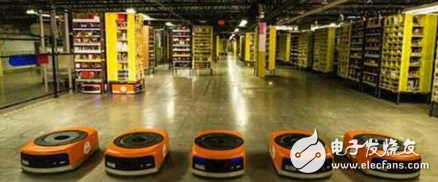"Automated warehousing is considered the future of the logistics industry. By using three-dimensional warehouse systems, it's possible to achieve high-level storage, automated access, and simplified operations. Automated warehousing serves as the foundation for smart logistics, and logistics robots play a crucial role in this transformation. However, one major challenge remains: how to improve robot navigation in complex environments. Some experts suggest that giving robots the ability to 'see' could be the key to solving this issue."
"Five years ago, e-commerce giant Amazon made a big move by acquiring Kiva, a leading robotic warehousing company, for $775 million. This acquisition helped bring automated warehousing into the spotlight. With increased investment and resources, various intelligent logistics robots have been rapidly developed and deployed. Despite these advances, achieving fully "smart logistics" still faces many challenges."

**Using Deep Vision Technology to Say Goodbye to "Exploring"**
Today, the use of intelligent robots in logistics is no longer a novelty. Their efficiency and cost-effectiveness have made them highly valued. But few realize that most of these frontline logistics robots are actually "blind." They rely heavily on two-dimensional codes or pre-set coordinates for guidance, often following fixed paths.
This means that if shelves shift or goods are unevenly placed, these robots may struggle to find their way. As a result, they might fail to retrieve the correct item from the shelf. In a dynamic storage environment, it's essential for robots to "see," understand where they need to go, and identify what needs to be picked up.
"With deep vision technology, robots can now navigate without relying on pre-marked paths. Bluecore Technology has revolutionized the visual capabilities of logistics robots, allowing them to explore and make decisions on their own."
By leveraging deep vision systems, robots can accurately determine the 3D position and orientation of objects. This enables them to choose the right path and grasp items with precision. From unloading goods to placing shelves, planning robot routes, and positioning robotic arms, integrating deep-vision handling and picking robots can make fully autonomous warehouses a reality.
**Logistics Robots at Home and Abroad – "Home-Grown" Solutions Have More Advantages**
With the huge potential of the logistics robot market, foreign companies have not slowed down their development efforts. Companies like Fetch Robotics and Adept have also adopted visual-based navigation to enhance robot intelligence.
While laser and depth camera technologies work well in their home countries, they sometimes face limitations when applied in China. Local conditions, such as irregular layouts and unique operational requirements, can make foreign solutions less effective.
"We offer full service and support at a price that's only one-third of overseas alternatives." Compared to expensive foreign equipment, which often lacks local support, "home-grown" logistics robots have clear advantages. Beyond just selling robots, we provide ongoing monitoring, maintenance, and updates. Our understanding of local conditions allows us to create more flexible and intelligent solutions.
Logistics robots are not limited to e-commerce warehouses. They also have great potential in factories, hospitals, airports, and other sectors. As the demand for automation grows, the future of logistics looks brighter than ever.
Cloud Storage PCB,Smart Home PCB,Pcba Circuit Board,Pcb Customized
Dongguan Jingling Communication Technology Co., Ltd. , https://www.jlpcba.com